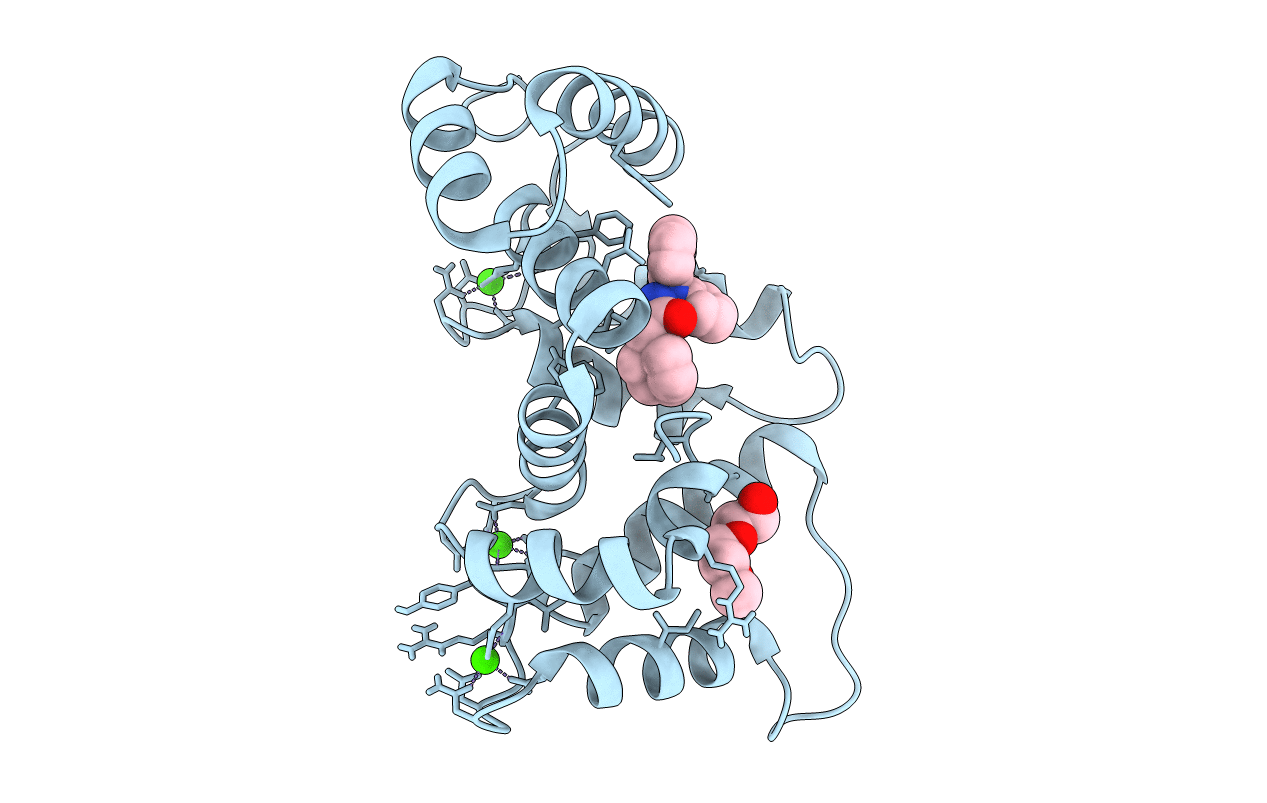
Deposition Date
2015-07-27
Release Date
2017-01-25
Last Version Date
2024-01-10
Entry Detail
PDB ID:
5AAN
Keywords:
Title:
Crystal structure of Drosophila NCS-1 bound to penothiazine FD44
Biological Source:
Source Organism:
DROSOPHILA MELANOGASTER (Taxon ID: 7227)
Host Organism:
Method Details:
Experimental Method:
Resolution:
1.60 Å
R-Value Free:
0.20
R-Value Work:
0.18
R-Value Observed:
0.18
Space Group:
P 21 21 21


